Takht-i-Bahi, a UNESCO World Heritage Site in Pakistan, represents a significant archaeological relic of the ancient Buddhist civilization. This complex stands not only as a crucial cultural emblem for the country but also contributes to the global heritage, reflecting the rich tapestry of human history. UNESCO actively works to preserve invaluable sites of historic, cultural, and scientific importance worldwide. With a commitment to safeguarding the diverse heritage of humanity, UNESCO recognizes landmarks like Takht-i-Bahi for their exceptional universal significance.
The following article will explore Takht-i-Bahi’s rich history, distinctive architecture, archaeological findings, conservation efforts, and visitor guidelines, providing readers with a comprehensive understanding of its importance as a treasured World Heritage Site.
UNESCO: Guardian of Global Heritage
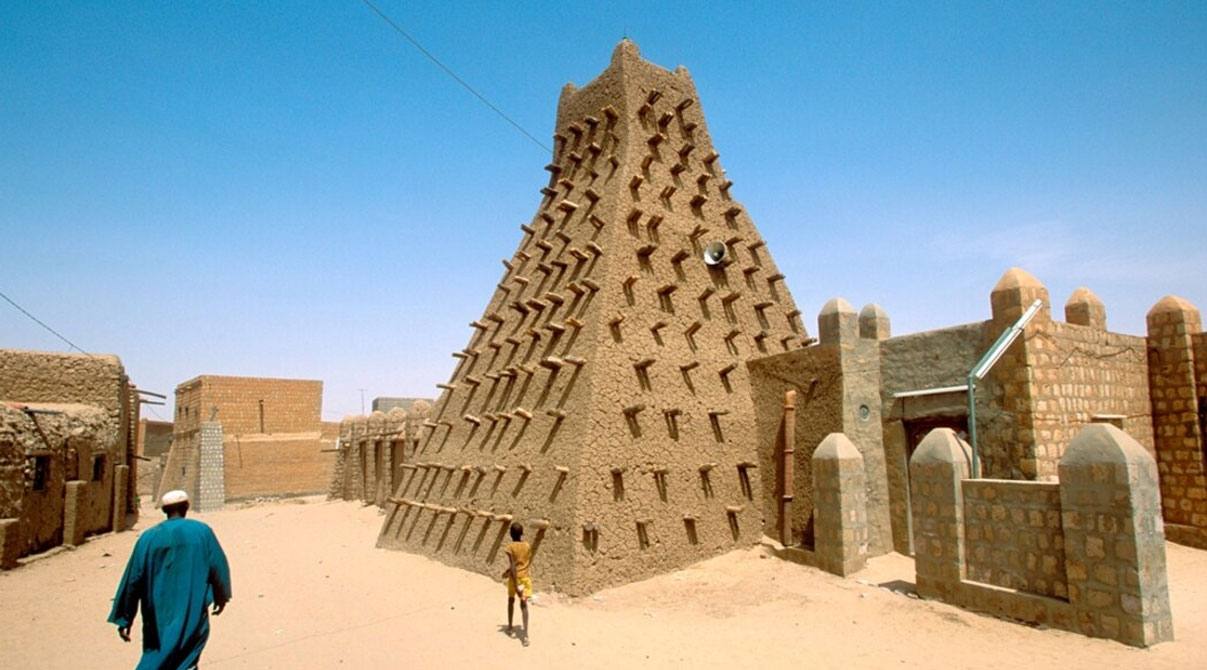
The United Nations Educational, Scientific, and Cultural Organization (UNESCO) is an essential arm of the United Nations, dedicated to promoting international collaboration through education, science, culture, and communication. Established on November 16, 1945, UNESCO strives to build a just, inclusive, peaceful, and open knowledge society in all its diversity.
Mission and Objectives
UNESCO operates based on a transformative vision fostering a sustainable future where the power of education, culture, and science act as catalysts for positive change. Its mission encapsulates building peace in the minds of people, eradication of poverty, sustainable development, and intercultural dialogue. The organization believes that political and economic agreements are not enough to build a lasting peace. Peace must be established on the basis of humanity’s moral and intellectual solidarity.
What does UNESCO World Heritage Site Mean?
The term “UNESCO World Heritage Site” refers to a landmark or area with legal protection by an international convention administered by UNESCO. UNESCO designates these sites for having cultural, historical, scientific, or other forms of significance, with the goal of preserving humanity’s rich heritage.
Designation Criteria: Identifying Wonders of the World
For a site to earn the prestigious World Heritage Site title, it must meet at least one of the ten criteria set by UNESCO. These criteria range from representing a masterpiece of human creative genius, bearing a unique or exceptional testimony to a cultural tradition or civilization, and containing superlative natural phenomena or areas of exceptional natural beauty and aesthetic importance.
The Significance: More Than Just a Title
Designation as a UNESCO World Heritage Site brings international recognition and aids in preservation efforts. This status often attracts tourism, leading to economic benefits for the region. More importantly, this designation ensures the protection and transmission of the site’s outstanding value to humanity for future generations, playing a vital role in global cultural preservation and education.
Takht-i-Bahi: Pakistan’s Ancient Treasure

Takht-i-Bahi, known as the ‘Throne of Water Spring’, is a distinguished archaeological site located approximately 15 kilometers northeast of Mardan in Pakistan’s Khyber Pakhtunkhwa province. Established in the early 1st century CE, it was once a thriving Buddhist monastic complex, serving as a spiritual and community center.
This ancient complex is a window into Buddhist life, showcasing a meticulously preserved series of stupas, monastic chambers, and a main sanctuary. Each element of Takht-i-Bahi reflects the architectural and artistic aesthetics of Buddhist culture during its time, offering valuable insights into the religious and cultural practices of the era. One of its notable features is its unique design, harmoniously integrating structures with the surrounding landscape, creating a serene environment for meditation and contemplation. Its ingenious layout reveals advanced architectural planning and water management systems, embodying the technical sophistication of its creators.
Recognized and protected as a UNESCO World Heritage Site, Takht-i-Bahi is an emblem of exceptional preservation of Buddhist art and architecture. The prestigious UNESCO designation not only highlights its universal value but also ensures commitment to its protection and conservation, facilitating the site’s integrity for future explorations and academic studies.
As a testament to the Gandharan civilization, the site illustrates the dynamic cultural exchanges and influences that occurred in the region, thanks to its strategic location along the Silk Road. Takht-i-Bahi played a significant role in disseminating Buddhist teachings and facilitating trade, making it pivotal to the cultural and spiritual landscape of ancient Asia. Each relic within its confines tells a story of a vibrant past, making it a living museum and a beacon of history and heritage for visitors from around the world.
The Historical Tapestry of Takht-i-Bahi: Origins

The origins of Takht-i-Bahi trace back to the early 1st century CE, illuminating the historical canvas of the region with its enduring presence. Constructed during the Kushan period, visionaries designed this architectural masterpiece as a sanctuary for Buddhist monks, providing a serene retreat for meditation, education, and spiritual growth.
Purpose and Early Usage
Serving its original purpose diligently, the complex played a pivotal role in propagating Buddhist teachings and practices. The establishment was not merely a secluded spiritual enclave but also a bustling center of learning and enlightenment, attracting scholars and devotees from various regions.
Historical Significance and Roles
As history meandered through different epochs, Takht-i-Bahi witnessed the rise and fall of several dynasties and empires, each leaving an indelible imprint on its stone canvases. The site’s resilience through time is a silent testimony to its significant role during different historical junctures, serving as a beacon of Buddhist heritage and wisdom amidst the ever-changing political and cultural landscapes.
Takht-i-Bahi and Buddhist Heritage
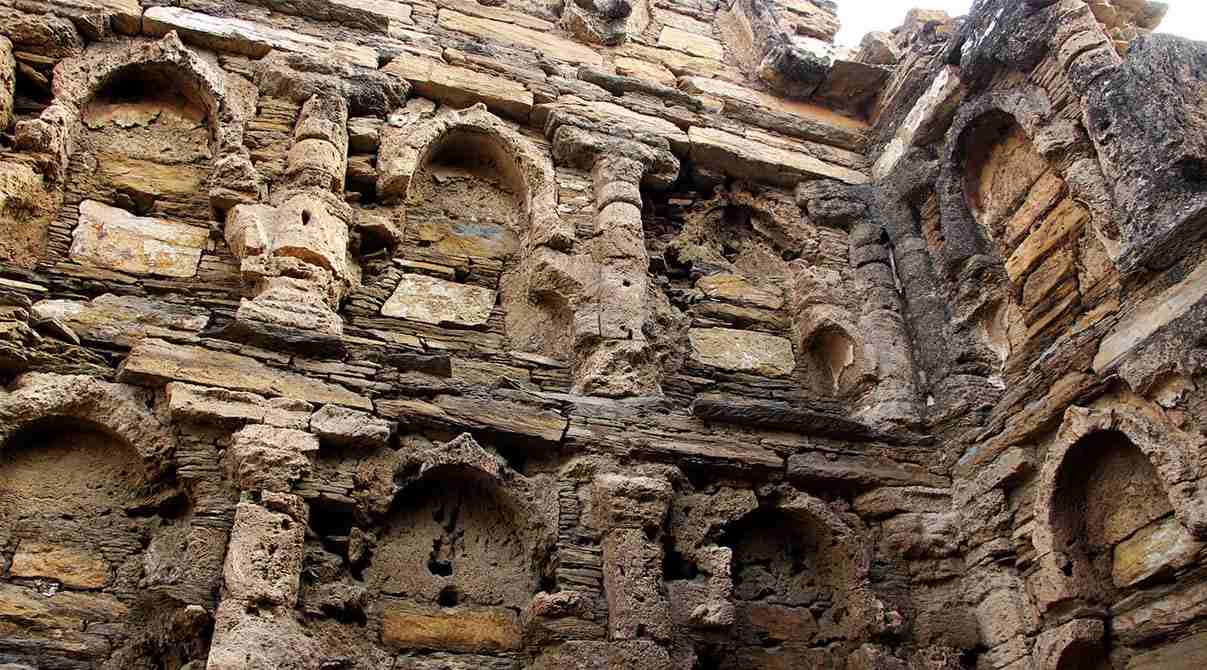
Takht-i-Bahi’s connection to Buddhist heritage is particularly noteworthy, offering invaluable insights into the religious practices, social dynamics, and artistic expressions of the time. The complex’s intricate carvings, stately stupas, and expansive courtyards unveil a narrative deeply entwined with the philosophical underpinnings and aesthetic sensibilities of Buddhism.
Broader Historical Significance
The site’s historical significance transcends its physical boundaries. It contributes immensely to the broader understanding of the region’s past and the vibrant tapestry of Buddhist culture. Each layer of Takht-i-Bahi’s history adds depth to its allure. It beckons historians, archaeologists, and curious travelers alike to explore its mysteries and appreciate its grandeur.
Witness to Centuries of Change: A Silent Sentinel
Through centuries, Takht-i-Bahi has stood as a silent sentinel. It bears witness to the ebb and flow of time while safeguarding the whispers and echoes of a bygone era. Its stones narrate tales of devotion, perseverance, and transcendental wisdom. The site invites all to immerse themselves in the fascinating saga of its inception, glory, decline, and eventual recognition as a treasure of global heritage. The historical background of Takht-i-Bahi is not just a chronicle of its own journey. It is also a mirror reflecting the intricate and enigmatic tapestry of human civilization and spiritual quest in the Indian subcontinent.
Related: Rahim Yar Khan – One of the Oldest Heritage Sites of Pakistan
The Architectural Brilliance of Takht-i-Bahi
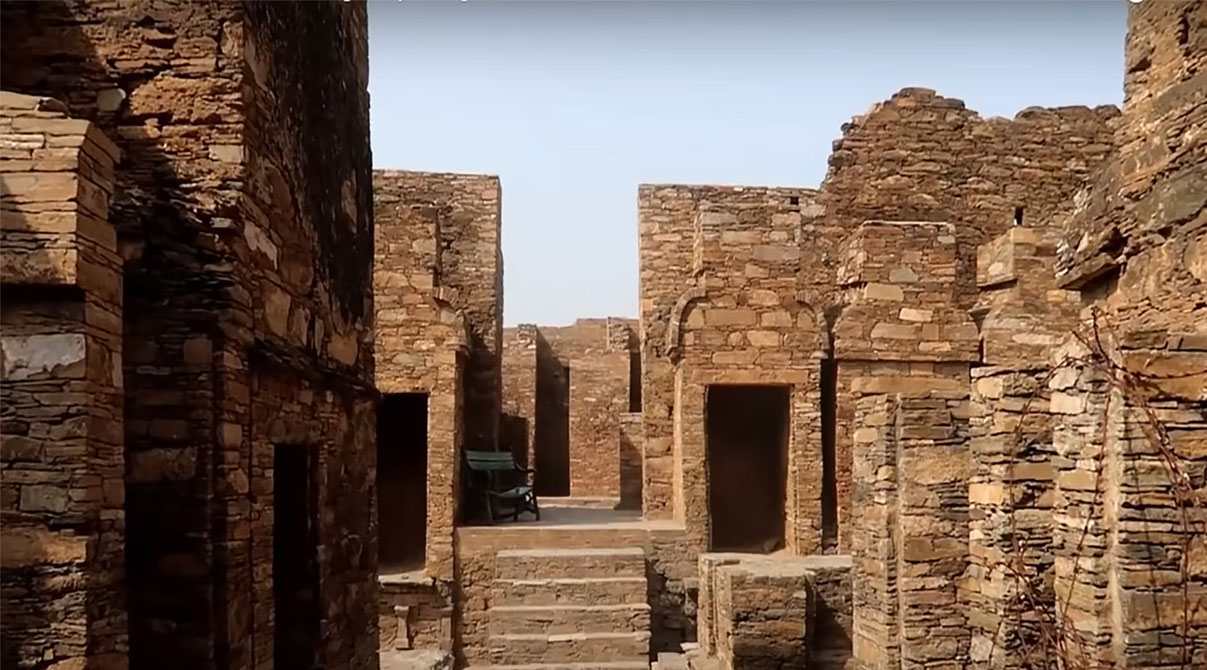
Takht-i-Bahi boasts a distinctive architectural style reflective of the Gandharan school of architecture, a confluence of Greco-Roman and Indian styles. This combination results in a unique aesthetic, showcasing the cultural amalgamation prevalent during its construction in the early centuries of the Common Era.
Iconic Structures
At the heart of the complex lies the Main Stupa Court. The court houses an array of stupas, revered as the sacred monuments in Buddhism. These stupas are meticulously crafted, serving as focal points of veneration and meditation. Adjacent to the court are the monastic chambers, offering a glimpse into the monks’ ascetic lives. These spaces were designed for contemplation and study. They provide a fascinating insight into the daily routines and spiritual practices of the inhabitants. Dominating the site is the Main Sanctuary. It’s a captivating structure perched on a high platform accessible via a grand staircase. It serves as the nucleus of religious activities.
Artistry in Stone: Unique Elements and Carvings
Takht-i-Bahi is adorned with exquisite carvings and reliefs, each telling tales of Buddhist lore and philosophy. The complex’s walls and columns feature intricate designs. They are adorned with motifs and symbols carefully chosen to represent various aspects of Buddhist theology and cosmology. These artistic pieces enhance the site’s spiritual ambiance and aesthetic appeal.
Evolving Canvas: Changes and Renovations
Over the centuries, Takht-i-Bahi has undergone significant changes and renovations. While the core structures have been preserved. Various elements have been added, modified, or restored to maintain the site’s integrity and accommodate the needs of its changing patronage and communities. These alterations, far from diminishing, have enriched Takht-i-Bahi’s architectural tapestry. They add layers of history and artistry that continue to intrigue and inspire visitors and scholars alike. Each visit to the site offers a journey through time. As the stones whisper tales of devotion, beauty, and resilience through the ages.
Archaeological Gems: Takht-i-Bahi’s Hidden Treasures

Delving into the archaeological finds at Takht-i-Bahi, each artifact unearthed serves as a tangible connection to a vibrant history. It reveals insightful tales of a bygone era and offers an understanding of the profound Buddhist legacy encapsulated within its venerable walls.
Archaeological Discoveries at Takht-i-Bahi
Takht-i-Bahi is a treasure trove of archaeological findings that unveil the vibrant Buddhist culture of the past. The site has yielded an array of significant discoveries, including religious artifacts, sculptures, coins, and inscriptions. Each of these pieces contributes to the broader understanding of the spiritual and daily lives of individuals who revered this sacred complex.
Sahr-i-Bahlol: History Intertwined with Takht-i-Bahi
Sahr-i-Bahlol is a significant archaeological site located near Takht-i-Bahi. This ancient city dates back to the 1st century BCE. It’s a testament to the Gandhara civilization’s cultural richness and diversity. Sahr-i-Bahlol is characterized by its fortified city structure, which has remained relatively intact over centuries. It provides valuable insights into the region’s historical context and the lives of its inhabitants. The site’s close proximity to Takht-i-Bahi highlights the area’s importance as a major center of Buddhist learning and cultural exchange.
Together, Sahr-i-Bahlol and Takht-i-Bahi offer a comprehensive view of the Gandhara civilization’s architectural, religious, and artistic contributions. It makes them indispensable for understanding the region’s historical significance and the broader cultural tapestry of ancient South Asia. These sites collectively embody the vibrant history and heritage that define this fascinating region. They attract scholars and tourists alike who are eager to explore their mysteries and marvels.
Importance of the Discoveries for Understanding Buddhist History
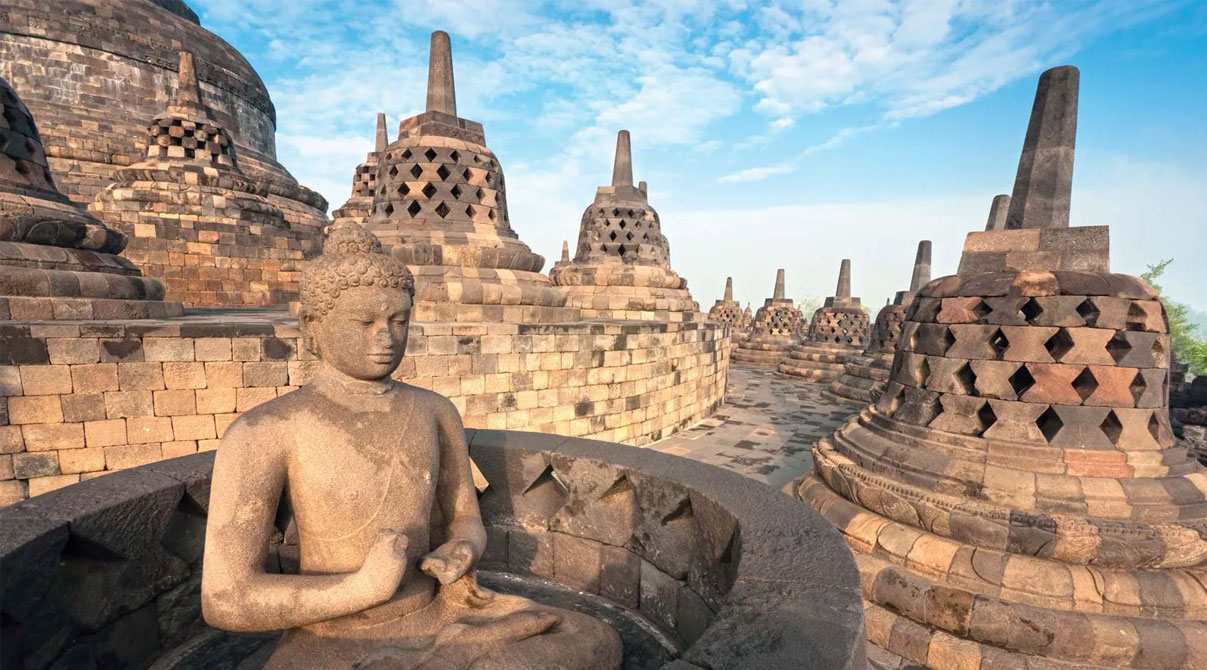
The importance of these discoveries is paramount as they offer invaluable insights into Buddhist history. Archeologists have found artifacts like sculptures of various Buddhas and Bodhisattvas, carved relics depicting scenes from Buddhist teachings, and inscriptions. These provide a detailed view of the socio-religious practices of the time. These findings are not only significant for local history. They also enhance the global understanding of Buddhist culture and its influence during different historical periods.
Current Status and Protection of the Archaeological Site
Protected under Pakistan’s Antiquity Act, the ruins of Takht-i-Bahi and Sahr-i-Bahlol are significant archaeological sites. These are meticulously managed by both federal and provincial departments. Takht-i-Bahi is well-conserved, with ongoing efforts to maintain its integrity. Although there are signs of wear and deterioration over time due to natural elements. However, both sites face threats from urbanization, prompting considerations for revising property boundaries and acquiring additional land for expanded buffer zones.
To address these challenges, a comprehensive 2011 Master Plan was developed. This plan guides the preservation and management of the sites and addresses conservation and visitor management concerns. The government of Khyber Pakhtunkhwa declared a 445-hectare area as an “Archaeological Reserve” to curb urbanization. UNESCO, alongside local entities, plays a pivotal role in safeguarding Takht-i-Bahi. These implement a blend of traditional and modern techniques for conservation. They ensure the site’s rich heritage continues to draw global interest and remains accessible for future exploration and study.
Related: Fort & Shalamar Gardens in Lahore – A UNESCO World Heritage Site
Visiting Takht-i-Bahi: A Journey Back in Time
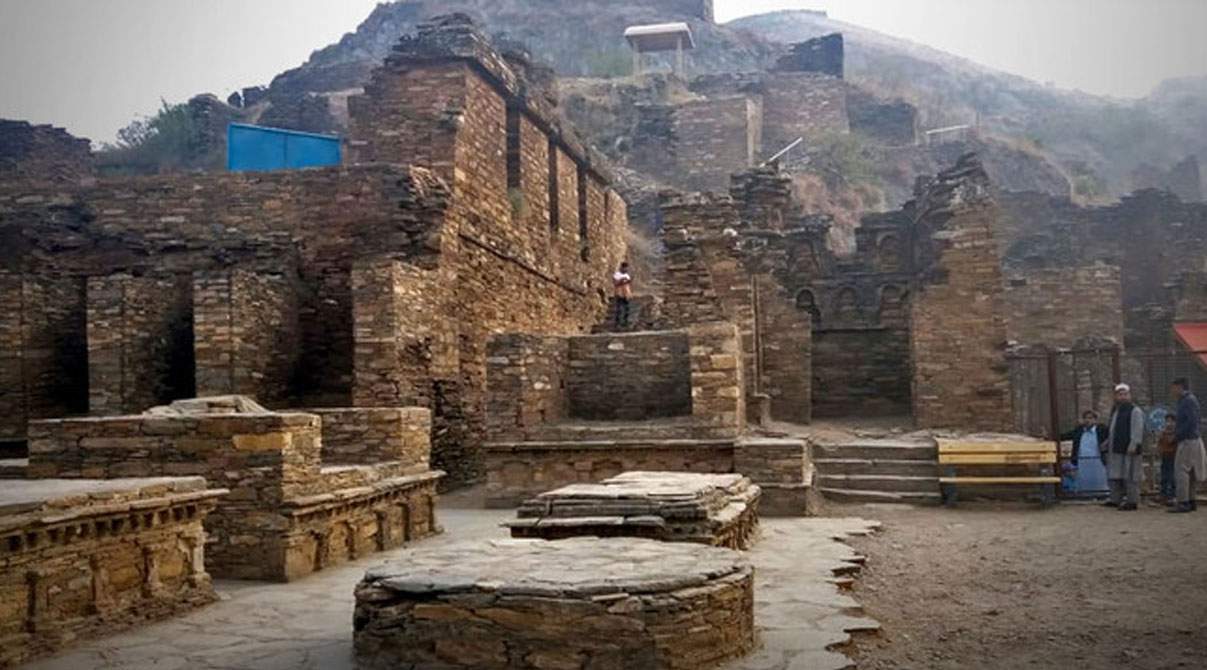
To visit Takht-i-Bahi, you need to travel to the province of Khyber Pakhtunkhwa in Pakistan. The ruins of the Takht-i-Bahi Buddhist monastery are situated 15 km away from the city of Mardan. The capital of Khyber Pakhtunkhwa, Peshawar, is 80 km away from this historical site. The monastery is perched on top of a small mountain approximately 500 feet high. Close to Takht-i-Bahi, you’ll find the ancient fortified city of Shahr-i-Bahlol and a modern village bearing the same name. Both of these are worth a visit. The ruins are easily accessible, being only 2 km away from the area’s main bazaar.
The surrounding area is primarily agricultural, with locals cultivating wheat, sugarcane, and various vegetables. Despite its initial inaccessibility, the growing popularity of Shahr-i-Bahlol and Takht-i-Bahi has led to the development of roads and parking lots. Hence, it is now easier for visitors to explore these historical treasures.
The best time to plan your visit is between October and April. During these months, the weather is relatively cool and comfortable, making it ideal for exploring the outdoor site. The pleasant climate allows for a more enjoyable and leisurely experience.
For visitor convenience, the site is equipped with basic facilities and amenities. It includes restrooms and a small museum that showcases some of the significant findings from the site. Guides are also available to provide deeper insights into the history and significance of Takht-i-Bahi.
Takht-i-Bahi: Architectural Heritage of Gandhara Civilization
In conclusion, Takht-i-Bahi stands not merely as a relic of the past. It is also a vibrant testimony to the rich cultural, religious, and architectural heritage of the Gandhara civilization. Its well-preserved structures, significant archaeological findings, and the serene aura that envelops it offer visitors an unparalleled glimpse into the lives and practices of ancient Buddhist monks.
With the dedicated conservation efforts by UNESCO and local Pakistani entities. Takht-i-Bahi is not only protected but also celebrated as a site of global significance. It provides valuable insights into the tapestry of human history. For travelers, historians, and curious minds alike, a visit to this mesmerizing site promises a journey through time. Here each stone whispers tales of devotion, artistry, and resilience. As we explore and appreciate Takht-i-Bahi. It is crucial to approach it with respect and a commitment to preserving its timeless beauty and wisdom for future generations to explore, learn from, and cherish.